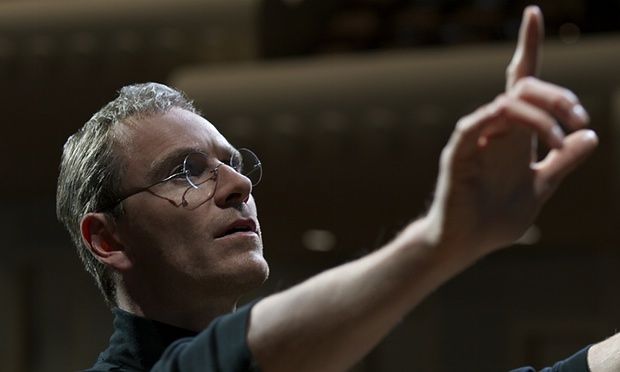
Photo courtesy of The Guardian
When it comes to an Aaron Sorkin screenplay, I am incredibly biased. Winner of both Oscar and Emmy awards, Sorkin has become one of the most famous and impressive screenwriters of modern film and television. From “The Social Network,” “A Few Good Men,” “The West Wing” and “The Newsroom,” Sorkin is well-known for his fast-paced, biting, intelligent dialogue, and centering around arrogant yet brilliant people in leadership roles.
Obviously, then, he was a perfect fit to write a story about the CEO of Apple, Steve Jobs, who struggles with control and perfection, severing alliances wherever he can in order to achieve the highest level of success. The film, directed by Academy Award winner Danny Boyle, tracks this industry titan through three phases of his career and personal life. The story is structured into three act segments, each backstage of the grand opening of a new Apple product. From 1984, 1988 and 1998, we observe the changes in Jobs’ business strategy, personal relationships and the way that he conducts himself.
Michael Fassbender plays the titular role with astounding precision, nailing Jobs’ mannerisms, facial expressions and voice. He is able to handle Sorkin’s quick talk and present a complex character who progresses and adapts with the story. He carries a tenacity, which acts as a shell to his fear that is kept underneath, all of which is subtle and profound. The supporting players are surprisingly perfect as well, including Kate Winslet as his “number two,” Seth Rogen as Steve Wozniak, his former best friend and Jeff Daniels as John Scully, the former CEO. They all spar with Fassbender at some point, hurling insults and information, all with Sorkin’s cutting back-and-forth exchanges; and somehow, it all balances perfectly, never feeling showy or overly-sentimental.
The directing style changes, or evolves I should say, over the three acts of the film. As it goes on, Boyle adjusts the camera to make it fit the time period more appropriately. The first chapter is less sharp, almost grainy, making it feel more dated, like how film might look in the early 80s. The second chapter is more focused visually, with some especially amazing shots of a conference table surrounded by rain pouring down over glass ceilings and windows. But, finally, by the third act, the vision is clear and bold, making everything seem more clear-cut as it would appear in that time period. It is a very unique directing choice, something biopics often miss out on.
The conflicts that arise between Jobs and his friends, family and co-workers are immaculately balanced, all while keeping a steady sense of kinetic energy that only ever tapers off for a bit at the beginning of the second act. Sorkin’s straight-forward form mixed with Boyle’s more haphazard style makes for an interesting combination, that, when paired finally with staggering performances, an electrifying score and spot-on costume and production design, makes for an all-around wonderful movie-going experience.
So, yes, I am biased because of my love of Aaron Sorkin, but please go see Steve Jobs.
BONUS POINTS: “Which Andy?,” the opening and closing shots, the casting of his daughter.
NEGATIVE POINTS: The slightly abrupt ending.
